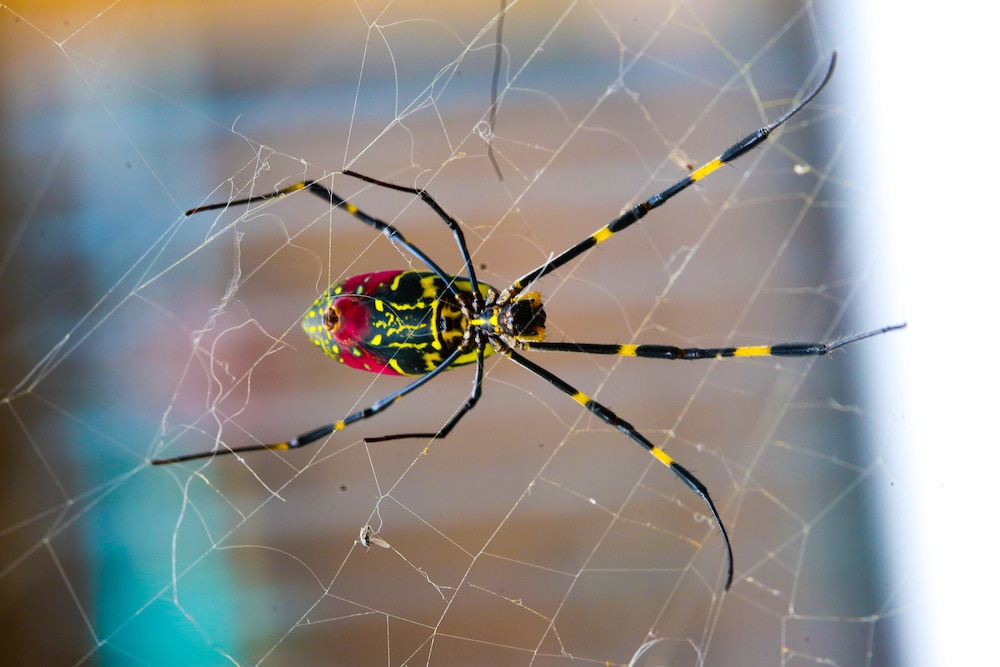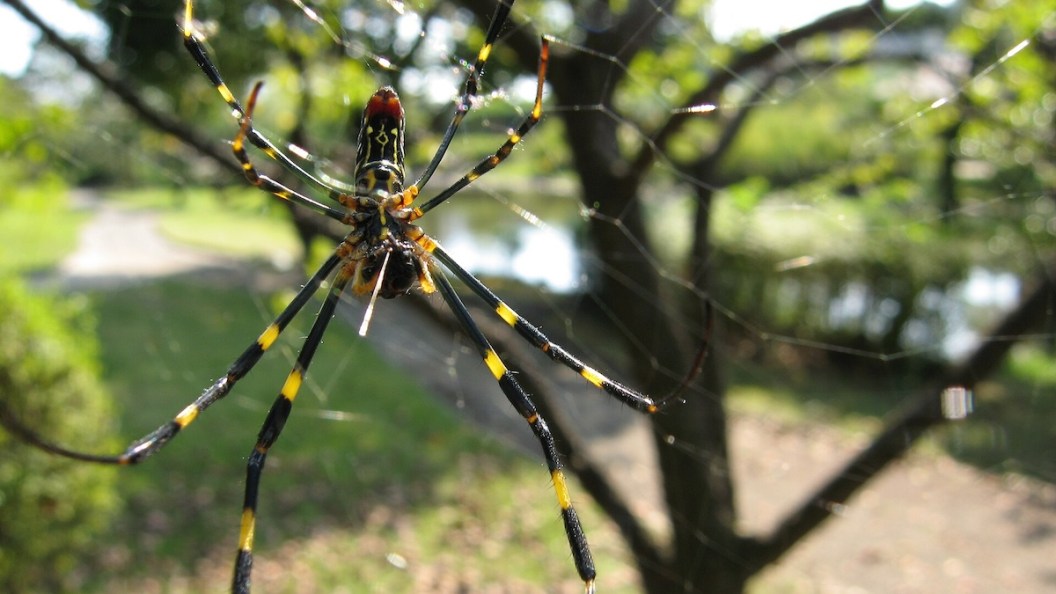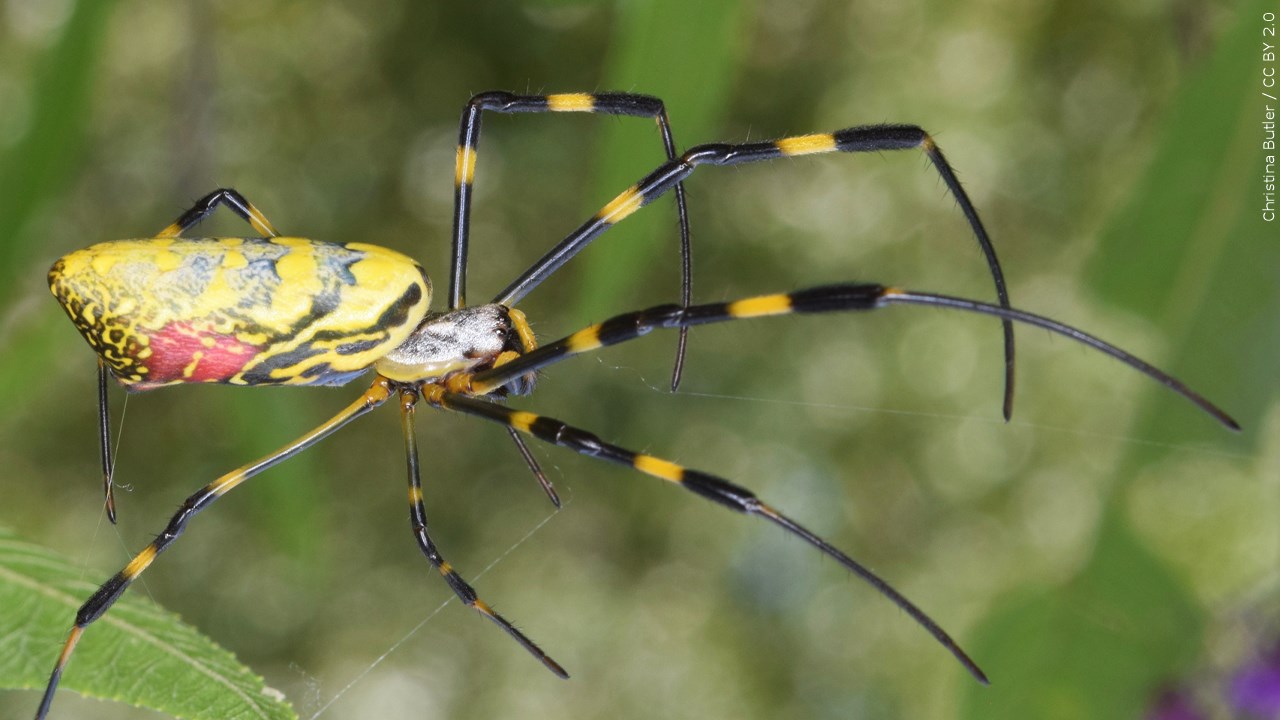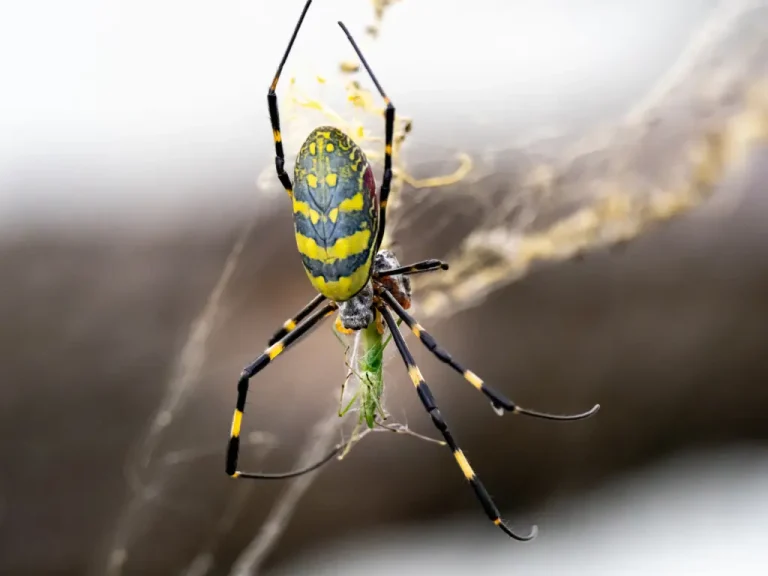Joro spider: WHAT IS THE JORO SPIDER?, Origin, Colours, Size, Facts, Myths And Everything To Know

The Joro spider (Trichonephila clavata), also known as the Jorō-gumo in Japanese, is an intriguing member of the orb-weaver family.
Appearance:
- Joro spiders exhibit striking yellow and black coloring.
- Their legs can extend up to three inches (8 cm) when fully stretched.
Origin and Spread:
- Native to East Asia, Joro spiders are found in China, Japan (except Hokkaidō), Korea, and Taiwan.
- Since the 2010s, they’ve been spreading across North America, with growing populations in parts of the South and East Coast of the United States.
- Joro spiders are master weavers. They construct intricate, circular webs that serve as both their homes and hunting grounds.
- The silk they produce is incredibly strong and sticky, allowing them to capture flying insects with ease.

Behavior and Risk:
- Joro spiders are venomous but rarely bite humans. Their venom is not deadly.
- They are relatively shy and pose little risk to people.
- Their wheel-shaped webs are a fascinating sight, especially during their life cycle.
- Joro spiders create elaborate webs where female spiders live.
- Their mating rituals are complex and unique. When a female is ready to reproduce, she releases pheromones to attract potential mates. Male Joro spiders are driven by their instinctual desire to reproduce.
Concerns and Conservation:
- While Joro spiders attract attention due to their appearance, experts emphasize other invasive species as more significant threats.
- Invasive pests like fruit flies and tree borers can cause more damage to crops, trees, and ecosystems.
- Conservation efforts face challenges due to global trade and climate change.
Spread in the U.S.:
-
- Populations of Joro spiders have been growing in parts of the South and East Coast for years.
- Researchers believe it’s only a matter of time before they spread to much of the continental U.S.
- However, experts emphasize that we shouldn’t be too worried about them. Joro spiders pose little risk to humans.
- Instead, scientists are concerned about invasive species that can damage crops and trees, exacerbated by global trade and climate change.
-
- Joro spiders serve as a “canary in the coal mine” species, drawing attention due to their showy appearance.
- The real concern lies with other introduced pests like fruit flies and tree borers, which can cause more damage.
- Managing invasive species is crucial for conservation, agriculture, and human.

Diet and Prey Capture:
-
- These spiders primarily feed on flying insects, such as flies, moths, and mosquitoes.
- When an unsuspecting insect flies into their web, the Joro spider quickly immobilizes it using silk threads and then injects venom to begin the digestion process.
Venom and Bite:
-
- While Joro spiders are venomous, their bite is not dangerous to humans. Their venom is designed to subdue small prey, not to harm larger animals.
- If you encounter a Joro spider, there’s no need to panic. They’re generally docile and won’t attack unless provoked.
Life Cycle:
-
- Joro spiders undergo a typical arachnid life cycle: egg sacs, hatchlings, juveniles, and adults.
- After mating, the female produces an egg sac containing hundreds of eggs. She guards it until the spiderlings emerge.

Color Variations:
-
- While the classic Joro spider has yellow and black markings, there can be color variations. Some individuals may exhibit more muted colors or even variations in pattern.
Habitat and Adaptability:
-
- Joro spiders are adaptable and can thrive in various environments, including gardens, forests, and urban areas.
- They prefer sheltered spots for their webs, such as between branches or under eaves.

